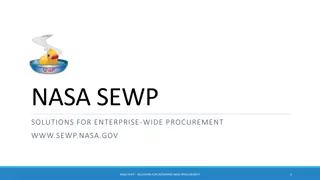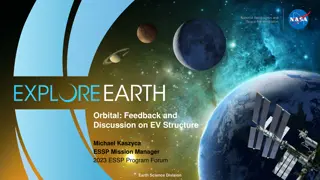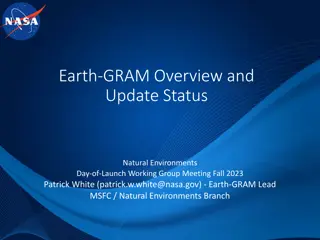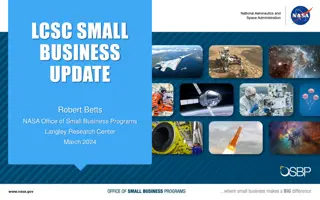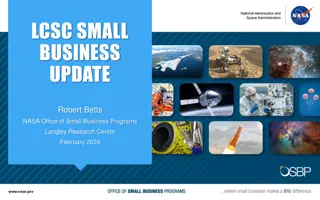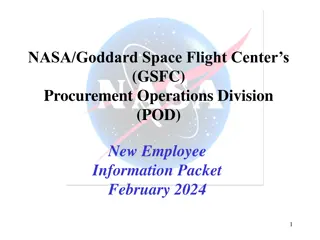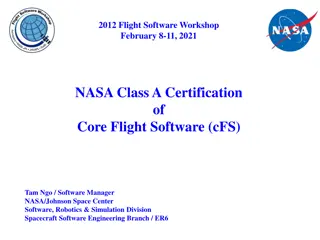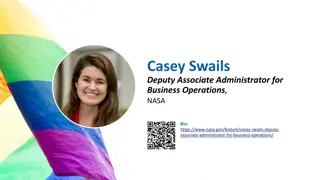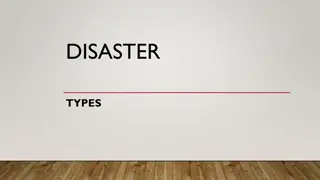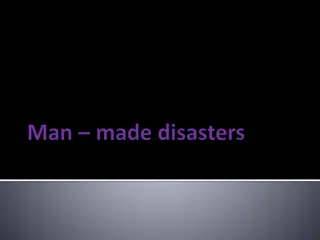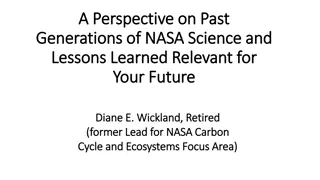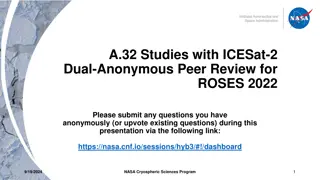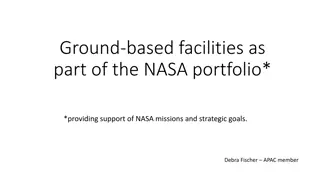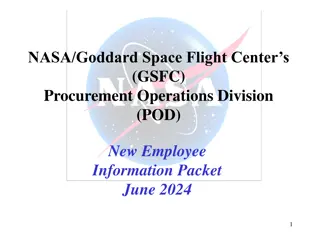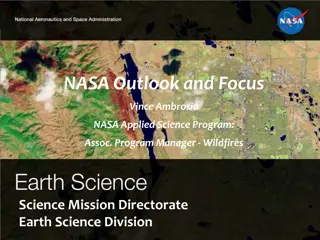Strategic Communications for NASA Earth Applied Sciences Disasters Program
NASA's Earth Applied Sciences Disasters Program aims to enhance disaster prediction, preparedness, response, and recovery through Earth observations. The program utilizes strategic communications to raise awareness about disaster impacts and the importance of NASA's work. It emphasizes the role of human efforts in benefiting global communities and highlights the need to redefine the perception of natural disasters. Additionally, it underscores the writing process involved in promoting disaster communication and profiles key individuals like geophysicist Sang-Ho Yun who contribute to the program's success through collaborative efforts.
Download Presentation

Please find below an Image/Link to download the presentation.
The content on the website is provided AS IS for your information and personal use only. It may not be sold, licensed, or shared on other websites without obtaining consent from the author. Download presentation by click this link. If you encounter any issues during the download, it is possible that the publisher has removed the file from their server.
E N D
Presentation Transcript
Strategic Communications for the NASA Earth Applied Sciences Disasters Program 08/05/2020 Gabriella Lewis College of William and Mary LaRC Summer Intern Carmen Atkins Western Washington University LaRC Summer Intern 1
NASA Earth Applied Science Disasters Program Promotes the use of Earth observations to improve the prediction of, preparation for, response to, and recovery from natural and technological disasters by addressing the research, response, and resilience efforts of disasters. Disaster applications and applied research on natural hazards support emergency preparedness leaders in developing mitigation approaches, such as early warning systems, and providing information and maps to disaster response and recovery teams. 2
Strategic Communications for the Disasters Program - Presents information to the general science-interested public - Used to raise awareness of NASA s work and especially of the people behind NASA: humans who care for our planet and do science to benefit humanity - Conveys the impact of the Disasters program: how people around the globe benefit from the NASA data products that decision-makers use to better respond to and recover from disaster events 3
Disasters vs. Natural Disasters #NoNaturalDisasters Disasters communication: Drop the natural in natural disasters - Disasters are not natural; hazards are. - Disasters only occur when hazards impact communities and society. - The term natural disaster implies that humans could not avoid the impacts of the hazard through responsible preparation and risk reduction. - The term also encourages the false belief that rapid urbanization, environmental degradation, etc. are not to blame for the increased impacts of disaster events on communities. 4
The Writing Process 1. Permission 2. Research 3. Create interview questions 4. Interview 5. Create first draft 6. Editing 7. Submit 5
Joint Effort: Sang-Ho Yun Profile Piece Sang-Ho Yun is a geophysicist and radar scientist at JPL where he is a PI on the ARIA project. - Working relationships (and therefore communication) is key in response efforts and goals of the Disasters program - Efforts in technological endeavors that seem unrelated to individuals still save lives and this is the goal of Yun and many other researchers with the Disasters program - Scientists are multifaceted and relatable
Glasscoe and Kirschbaums Collaboration PI: Dalia Kirschbaum (GSFC) - Landslide Disaster Risk Reduction and Response PI: Maggi Glasscoe (JPL) - Global Flood Modeling and Alerting Collaboration towards the first near-global model for flood and landslide hazards Citizen science and crowdsourcing hazard data make a difference - Landslide Reporter: landslides.nasa.gov 7
Diego Melgars Profile Piece Diego Melgar: Geophysicist at the University of Oregon - Interests: Earthquake seismology, strong ground motion, tsunamis, early warning systems, geodetic imaging Working with NASA to improve the tsunami forecasting and early warning system through NASA Applied Sciences A.37 ROSES research project Enlisting Satellite Data to Modernize Local Tsunami Early Warning 8
Virtual Reality with Shayna Skolnik Shayna Skolnik, founder and CEO of Navteca Works with the Disasters program to investigate the potential of virtual reality (VR) in disasters applications - VR provides a new level interactivity to view Earth science data - Provides a sense of scale that traditional visualization does not - VR is still in its infancy, but the possibilities are endless 9
SO2 and Volcanic Ash Tracking Product Piece - PI Nickolay Krotkov (GSFC) - Response to Raikoke Eruption (2019) on Kuril Islands - Ozone Mapping and Profiler Suite (OMPS) aboard the Suomi-NPP satellite - Map and chart animations of daily SO2 gas - Data on both volcanic ash and SO2 used to warn and direct flights in the region 10
Mexican Earthquake and Tsunami Product Piece - PI: Diego Melgar - Response to June 2020 earthquake offshore Oaxaca, Mexico - SLIP Model and Predicted Vertical Deformation Model - Models used to guide post-event tsunami surveys and as a comparison to real time models. 11
What do these pieces accomplish for NASA and the Disaster s program? - Bring awareness of NASA s Earth applied science and disasters work to the public - Give recognition to dedicated scientists/staff and important projects - Acknowledge scientists as regular people instead of out-of- touch and unreachable 12
Conveying impact - Informing the public that NASA and NASA scientists are working together to benefit our home planet and society - Conveying the importance of disasters research and applications and its benefit to society - Leading to further public support of NASA - Encouraging individuals to pursue meaningful careers at NASA 13
Questions? 14
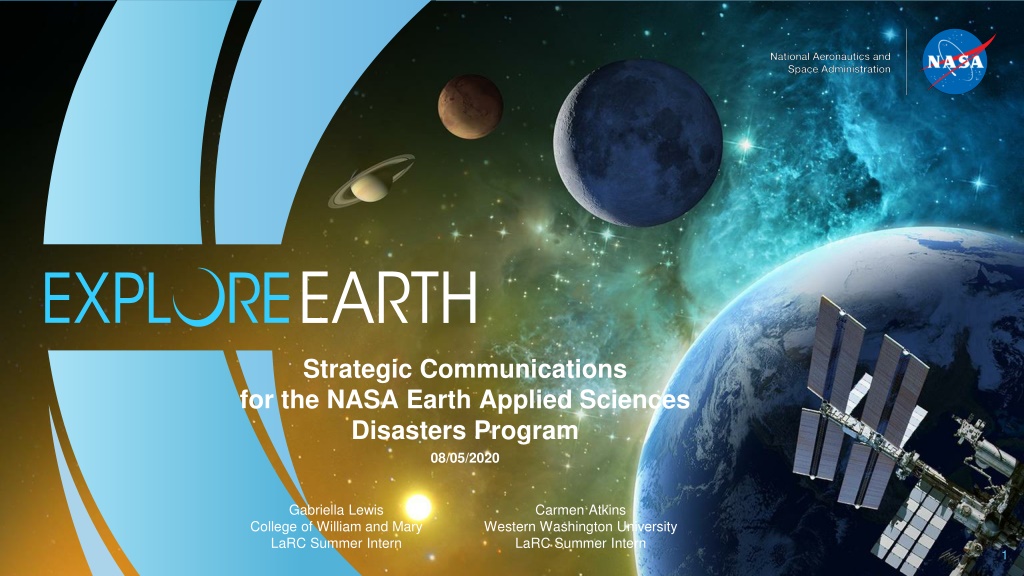

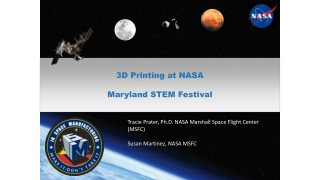
![❤Book⚡[PDF]✔ Doing the Impossible: George E. Mueller and the Management of NASA’](/thumb/21684/book-pdf-doing-the-impossible-george-e-mueller-and-the-management-of-nasa.jpg)


